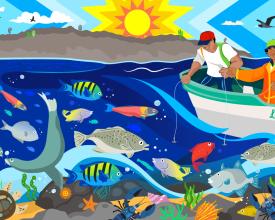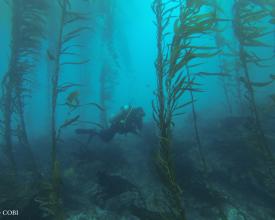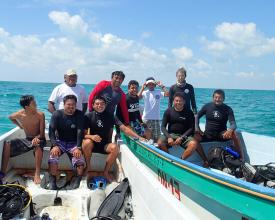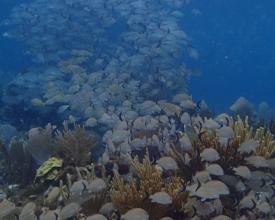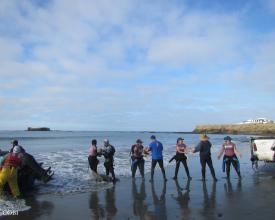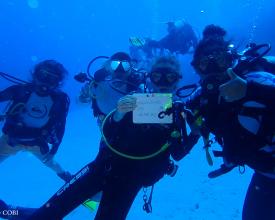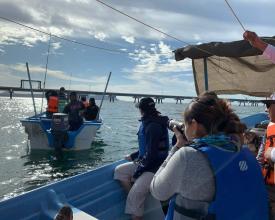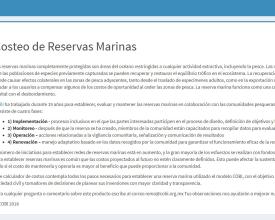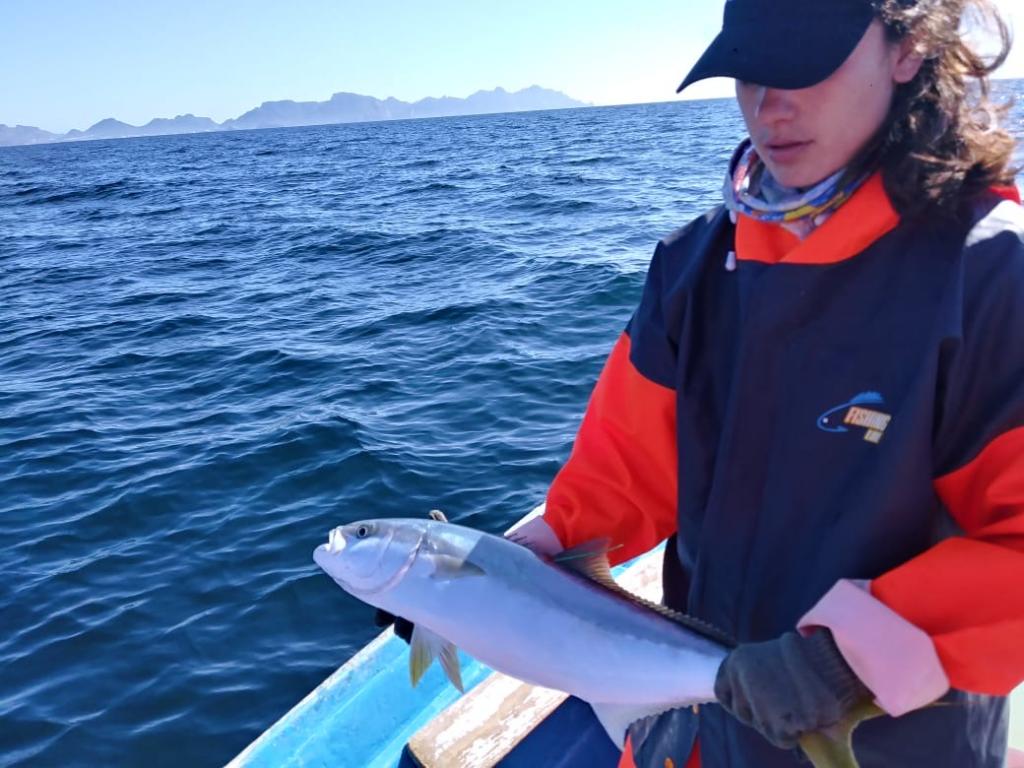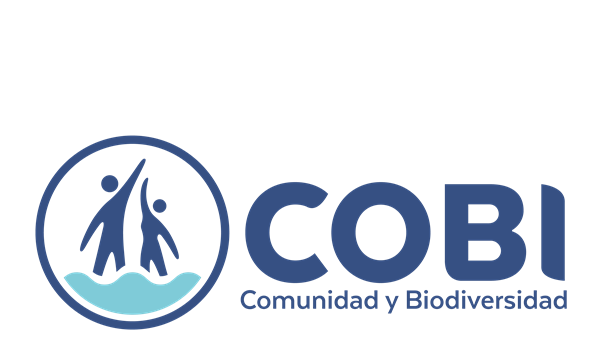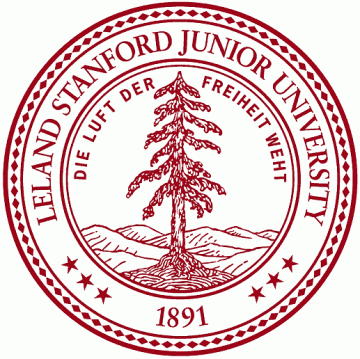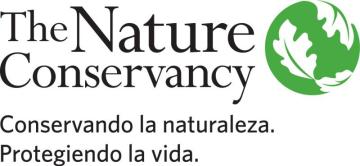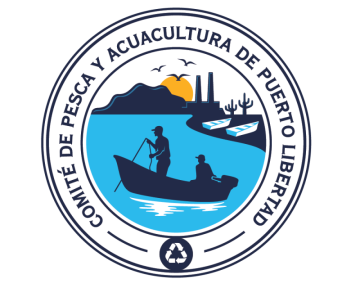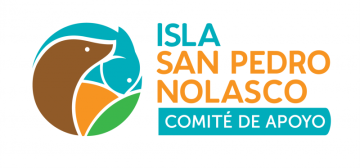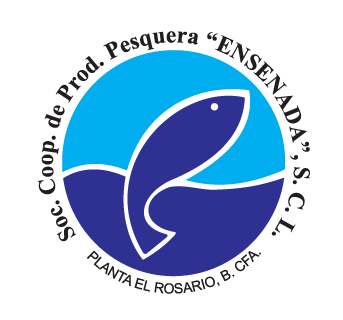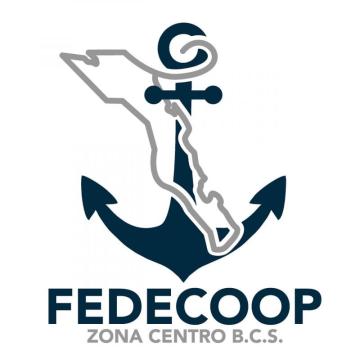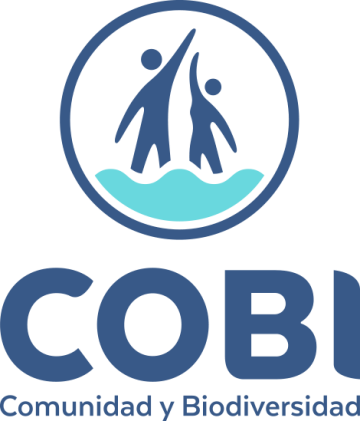
Fully protected community marine reserves
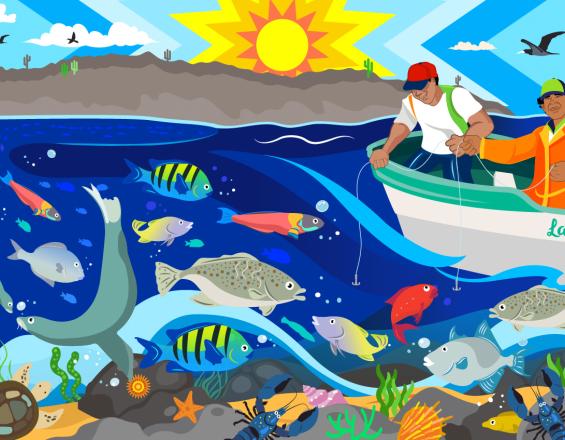
Fully protected community marine reserves are spatial management tools proposed by the environmental, fisheries or social sector to promote, among other things, the recovery of fisheries through an ecosystem-based approach. Different factors, such as overfishing and climate change, can lead to biodiversity loss and habitat degradation. Effectively designed, implemented and evaluated marine reserves can increase ecosystem resilience, protect critical habitats and contribute to sustainable fisheries in adjacent areas. The participation of fishing communities in the design, implementation and monitoring (carried out periodically and constantly) of marine reserves promotes social acceptance of this conservation tool and its appropriation by fishermen and fisherwomen.
Context
Challenges addressed
Strategically select the sites to be protected in areas where there is little scientific information. Also, consider the time it takes to raise awareness and empower fishermen and fisherwomen.
Monitoring and maintenance of the reserves must be affordable and set achievable objectives. It is necessary to consider that surveillance, either by the community or the government, is sometimes not enough to control illegal fishing.
Lack of political will and response times of government agencies represent another challenge. In addition, negative stories from the past represent those reserves where processes were top-down, too fast, and excluded those directly affected.
Consider that the effects of global changes are unpredictable and cannot be controlled, so strategies to adapt will be necessary.
Location
Process
Summary of the process
The establishment of reserves leads to questions such as: what area should I protect and of what size? what tools exist to evaluate the impact of my reserves? what and how much do I need to maintain my reserves in the long term?
Having a robust, multidisciplinary and transparent design and management of reserves helps to have a better acceptance and appropriation by fishermen and fisherwomen, making them feel pride in protecting biodiversity and marine resources (site prioritization blocks and design principles). In addition, it is of utmost importance to monitor possible changes inside and outside the reserves. This process is favored when proven methodologies are used and when the knowledge of women and men from the community are included in the data collection (community monitoring blocks). Finally, having a community monitoring system, as well as a costing plan for the marine reserves, guarantees a better operation of the reserves and their maintenance in the long term (monitoring and cost estimation blocks).
Building Blocks
Community monitoring of marine reserves
Marine reserves are geographically delimited areas with the objective of guaranteeing natural processes and protecting ecosystems, habitats and/or species. In areas that are intensively fished, marine reserves can help prevent, minimize or eliminate the negative effects of fishing (habitat destruction, biomass decrease, local extinction of species, loss of ecosystem services, etc.) and contribute to nature conservation.
To measure the success of a marine reserve it is necessary to generate data that reflect whether its objectives are being achieved. Establishing long-term monitoring programs, starting from a baseline and involving community members who use the resources, is a practice that has paid good dividends in favor of conservation measures. Empowering and training community fishermen and fisherwomen, both in data collection and in communicating on their own the benefits they have observed from their marine reserves, leads to adopting and promoting better fishing practices and other marine conservation tools.
Enabling factors
1. Interest on the part of the community.
2. Transparent and inclusive processes, respecting uses and customs.
3. Technical training that generates monitoring skills.
4. Strengthening of human capacities for decision making.
5. Strategies for long-term permanence of activities.
6. External and local financing programs, considering implementation costs and short- and long-term operating expenses.
7. Dissemination and socialization of results to inform, obtain feedback and generate management proposals.
Lesson learned
1. Propose clear and attainable goals.
2. Co-design the project in the medium and long term with the community.
3. Be constant and coherent with the actions implemented.
4. Define collaboration deadlines and the role of each actor during the established deadlines.
5. Generate a sense of ownership of the community monitoring programs.
6. Involve different sectors (community, researchers, authorities and civil society organizations) to enrich the monitoring program.
7. Communicating results within the communities is well accepted and better understood when it is done through the community monitors themselves.
8. Encouraging monetary contributions from community partners has been complicated in some areas. Contribution plans should be made from the beginning of the process.
Resources
Biophysical, socioeconomic and governance principles for the design, establishment and management of marine reserves
To promote the design, establishment and effective management of marine reserves, one of the challenges in Mexico has been to have robust guidelines based on local knowledge and the best available scientific information. Addressing this need between 2014 and 2019, biophysical, socioeconomic and governance principles were identified in three priority regions of Mexico: Pacific Southcalifornian, Gulf of California and Mexican Caribbean.
The biophysical principles help identify key habitats, key sites for species recovery and recruitment, and the design (location, size, shape, duration and distance) of marine reserves, also considering climate change adaptation. Socioeconomic principles encompass social, economic and cultural aspects. And governance principles contemplate the structures and processes for the establishment of marine reserves, institutions, decision making and the legal and political context.
The consideration of biophysical, socioeconomic and governance principles in the design of marine reserves maximizes their potential for success, viability and good governance, in order to ensure the sustainability of marine resources and benefits for communities.
Enabling factors
1. The existence of management objectives for the area or network of areas to be established.
2. Participatory and multidisciplinary processes with representation from all relevant sectors.
3. Inclusive and transparent processes that promote equity and equality in stakeholder participation.
4. Examples of biophysical, socioeconomic and governance criteria to be adapted and agreed upon by stakeholders in the establishment and management of a marine reserve.
Lesson learned
- Combining local knowledge and the best available scientific information generates robust results and increases the potential for successful, biologically relevant and cost-effective solutions.
- The relationships and bonds of trust between actors from various sectors that are generated in these exercises facilitate cooperation and coordination of stakeholders during the implementation stage.
- It is important that the multidisciplinary process actually has representation from all relevant stakeholders at different levels. It is recommended that stakeholder mapping be done prior to the process and shared with key people to ensure that no important stakeholders are excluded.
- Many of the principles are currently included in programs or regulations related to the establishment of marine reserves. Having a detailed guide for different priority regions in Mexico facilitates the development of the design, implementation and management processes of marine reserves.
- It is advisable to make use of the principles before and during the implementation of marine reserves to maximize their success.
Resources
Prioritization of sites for the establishment of marine reserves
One of the main challenges in the design of effective marine reserves is the difference in interests between conservation and the productive sector. The lack of interdisciplinary integration leads to the establishment of zones that do not meet conservation or fisheries management goals, or results in the decree of sites that are not socially accepted and therefore not adopted by local users.
Combining participatory processes with technical tools allows for the application of the best available science and local knowledge of fishermen and fisherwomen to carry out prioritization exercises in order to identify those sites with the greatest potential and generate socially accepted proposals that contribute to both conservation and fisheries management goals. In addition, the relationships and bonds of trust between actors from different sectors that are generated in these exercises facilitate cooperation and coordination of stakeholders during the design and implementation stage, contributing to optimal, biologically relevant and cost-effective solutions. Different prioritization tools exist; for example the Marxan program, which has been used around the world to support decision making.
Enabling factors
1. Define the management objectives for potential sites to be established.
2. Agreed biophysical, socioeconomic and governance criteria to maximize biological objectives and social benefits while minimizing costs to communities and other stakeholders.
3. A design based on the best available scientific information, local knowledge and the preferences of the productive sector.
4. The existence of a multidisciplinary, transparent and inclusive participatory process.
5. Processes of socialization of the results with local stakeholders and other sectors.
Lesson learned
1. Field validation of the selected sites is required.
2. Combining local knowledge and the best available scientific information promotes robust results and increases the potential for success in the effective management of the area. However, this does not ensure acceptance of the results by the productive sector, nor by the government.
3. Having the identification of sites does not ensure correct planning and follow-up. It is necessary to have political will and the approval of the communities.
4. Keep in mind that these processes require time (e.g., 1-5 years). Due to the interests of the sectors, sometimes the implementation of site protection can be done gradually.
Gender equality in community monitoring
Community involvement in the monitoring of marine reserves is a measure that adds to the success of this tool. This leads to greater co-responsibility in data collection and in understanding the effects of harvesting activities on the species caught, the habitat and marine ecosystems. By considering the participation of women and men with equal opportunities in monitoring activities, capacities are diversified, more solid and effective actions are generated, and spaces are created for the opinions of different stakeholders to be heard. In addition, capacities within the monitoring teams are strengthened and complemented, generating more robust knowledge and greater understanding of the co-management of natural resources.
Enabling factors
1. Generate opportunities for equal participation, considering the inclusion of women and men.
2. Raise awareness among women and men about the importance of the participation of both sexes in monitoring, highlighting their skills and strengths.
3. Strengthen the capacities of women and men alike in order to generate citizen science.
4. Build the capacities of women and men who participate in monitoring activities, with the objective of leading them to operational independence in data collection.
Lesson learned
1. Promote conditions for the participation of women to improve the process of integration of mixed groups, facilitating their empowerment in decision making.
2. Generate spaces for the professional growth of women and men in gender equality issues, promoting monitoring groups with equal participation free of stereotypes, discrimination and exclusion.
3. Creating mixed monitoring groups, seeking to assign roles outside the typical scheme of the sexual division of labor makes for a more solid work team.
4. Designing activities in schedules and times suitable for both sexes, considering the activities they carry out in the public and domestic spheres, promotes greater participation.
5. In the process of achieving gender equality, all those involved should be sensitized and ensure that there is no further inequality, isolation or violence against women.
6. The integration of mixed groups to carry out monitoring activities is not always accepted by the communities. It is recommended that the role of women in the communities be analyzed beforehand.
Respecting fully protected marine reserves through collaborative agreements and monitoring
An important component for the success of fully protected marine reserves is that they are respected by fishermen and fisherwomen, complying with the rules defined during their establishment to ensure their correct functionality. Through vigilance, respect can be achieved by preventing fishing activities (legal and illegal) from taking place within the marine reserve. Surveillance not only involves boat tours and denunciations, but also community agreements, the use of technology to strengthen and facilitate surveillance, as well as making information about the rules and limits of the marine reserves available to users.
In Baja California Sur, Mexico, there is a network of 12 marine reserves implemented since 2012. These were designed and established through community agreements and multi-sector participation. Since 2014, a community monitoring program was started, which has continued to grow hand in hand with the government sector and civil society organizations. This program has yielded positive results and has been an example for other communities, ensuring the benefits of these areas and promoting respect for them.
Enabling factors
1. Geographic delimitation of marine reserves and well-defined rules.
2. Participation of fishermen and fisherwomen in each process. Formulation of agreements, tours and follow-up of activities or complaints related to illegal activities.
3. Commitment to comply with the established agreements. Follow-up, management and knowledge of the consequences of not respecting the agreements.
4. Having technical (boats), financial (gasoline and payments), human (training and availability) and material resources for signaling.
Lesson learned
1. Co-responsibility: marine reserve applicants should consider that surveillance is an activity that also corresponds to them. Not only to the fishing authority. Adequate ways must be found for the applicants to participate in this activity.
2. Clear objectives: the objectives of the marine reserves should be clear and present and actions should be taken to achieve them. For example, if a reserve was established to protect a site recognized as a reproduction site, those involved in surveillance actions should have knowledge of the area and know the reproduction seasons in order to create and apply better surveillance strategies.
3. Limits of the tool: frustration can arise when illegal fishing activities affect fishing in areas adjacent to marine reserves. It is necessary to recognize the limits of this tool and know that it is not the solution to all problems.
Resources
Cost estimation of marine reserves
Fully protected marine reserves are tools proposed by the environmental, fishing and social sectors to promote the recovery of fisheries with an ecosystem approach and to achieve positive impacts on biodiversity conservation. Despite their success, many of them only exist on paper ("paper parks"); there is a legal decree, but there are no constant biological monitoring or surveillance actions. In many cases this situation is due to a lack of budget. Therefore, calculating the associated costs and developing mechanisms to cover the costs is of utmost importance to achieve long-term success.
Based on 21 years of experience, we estimate that biological monitoring of a community marine reserve through citizen science costs between US$1,500 and US$2,000 per day. Typically, seven days of work per year are needed, considering a team of eight people from the communities and two people with science training using SCUBA to conduct underwater transects. In addition, freely available tools are available to support communities and decision-makers in estimating the costs of implementing and operating reserves.
Enabling factors
1. To have transparency and clarity about expenditures and commitments in the short and long term.
2. Plan effectively, and consider steps and mechanisms to avoid budget shortfalls.
3. Document the co-investment processes of all stakeholders, including the fishing sector.
4. Promote community ownership of the marine reserve as a mechanism to increase the possibility of investment at the community level.
Lesson learned
1. During the process of creating community marine reserves, funded by philanthropy, it is common for the implementer to have periodic (e.g., annual) funding.
2. The lack of budgetary planning for the entire period of operation of the marine reserve can limit actions after the official establishment. Also, it should be taken into account that it is often easier to find funds to create a reserve than to operate it.
3. In order to assist the financial planning process of a reserve, we created a digital calculator (https://innovacionazul.shinyapps.io/AppCosteo/) to help any fisheries organization, civil society organization or government sector to project the costs of implementing and operating a marine reserve into the future, encouraging better planning in the short and long term.
Impacts
The implementation of marine reserves has provided positive environmental, social and economic impacts. Many of the reserves protect key ecosystems, species or zones (e.g., reproductive aggregation sites). As some communities have decided to stop fishing in certain areas for more than 10 years, a recovery in the abundance of fishery resources has been observed, some of them with high value. In addition, long-term marine reserves have buffered the effects of climate change and increased adaptive capacity (resilience) at the species level. Marine reserves can be temporary, giving the opportunity to rethink their size and location according to the results obtained.
Over time, communities take ownership of conservation projects, become involved in the management of their resources, and promote marine biodiversity conservation with other communities. Community marine reserves are a solution for protection, learning and adaptation.
Beneficiaries
- 1,300 inhabitants of coastal communities on the Pacific coast of Baja California.
- 1,550 inhabitants of the coastal communities in the Mexican Caribbean.
- 1,950 inhabitants of the coastal communities in the Gulf of California.
Sustainable Development Goals
Story
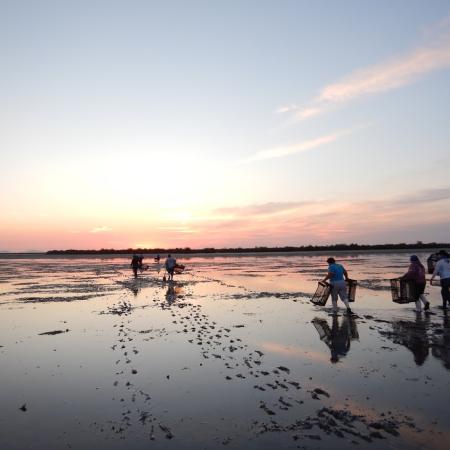
Since 2011, civil society organizations have collaborated with coastal communities in Mexico in the establishment and operation of 37 Fishing Refuge Zones, a type of marine reserve, covering a total area of 260 km2. COBI has participated in the creation of 86% of these zones. The planning and management of these types of marine reserves has been done through bottom-up, multi-sectoral processes, including local knowledge and the best available scientific information; always focused on a more sustainable future.
Ten years after the establishment of the marine reserves, the communities share their experiences with neighboring communities and promote this tool as an effective method for managing fishery resources and preserving biodiversity. The fishermen and fisherwomen see the reserves as "bank accounts" that can be used in times of crisis.
Finally, a successful example with more than 15 years of multi-sectoral collaboration with the Baja California Buzos y Pescadores cooperative, Standord University and COBI, has resulted in multiple scientific publications, contributions and improved knowledge to address different problems, in addition to the implementation and permanence of the reserves. Also, for the first time in 2020 due to COVID-19, the fishing cooperative and the group of women monitors have monitored their marine reserves without the presence of COBI, which represents a great achievement in terms of autonomy and empowerment.

